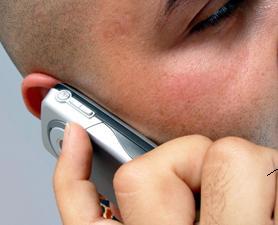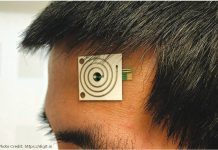
Sounds incredible but the scientists from Korea have turned the main ingredient of calamine lotion into a tiny material that converts sound waves into electricity.
Just like the process when the speakers transform electric signals into sounds now is possible use the opposite, turning sounds into source of electrical power. This research could lead to create panels that can charge a cellphone from a conversation or provide a boost of energy to the nation’s electrical grid generated by the noise during rush hour traffic.
“Sound power can be used for various novel applications including mobile phones that can be charged during conversations and sound-insulating walls near highways that generate electricity from the sound of passing vehicles,” said Young Jun Park and Sang-Woo Kim, the two corresponding authors of a new article in the journal Advanced Materials.
Harvesting energy from phone calls and passing cars is based on materials known as piezoelectrics. When bent, a piezoelectric material turns mechanical energy into electricity. Lots of materials are piezoelectric: cane sugar, quartz and even dried bone create an electrical charge when stressed. For decades, scientists have pumped electricity into piezoelectric materials for use in environmental sensors, speakers and other devices.
Over the last few years, however, scientists have made dramatic advances in getting electricity out of piezoelectric devices. Most of these devices, which are not yet available for consumer purchase, would generate power as a person walks, runs or, in this case, talks. The U.S. Army is even looking at partially powering some vehicles by channeling the physical impact of a bullet into a small electrical current.
The Korean scientists, however, want to harness sound waves. Using zinc oxide, the main ingredient in calamine lotion, Young Jun Park, Sang-Woo Kim and their colleagues created a field of nanowires sandwiched between two electrodes. The researchers blasted that sandwich with sound waves, which at 100 decibels were not quite as loud as a rock concert. A normal conversation is about 60-70 decibels. The sound waves produced a mild electrical current of about 50 millivolts. The average cellphone requires a few volts to operate, several times the power this technology can currently produce.
The new research is interesting, said Michael McAlpine, a scientist at Princeton University who also builds energy harvesting devices. “But the real question though is whether there is enough ambient noise to act as a power source as for a cellphone,” said McAlpine. A consumer probably wouldn’t want to attend a rock concert or stand next to a passing train to charge their cellphone.
The Korean scientists agree: 50 millivolts is not a lot of power, but they also say their research is proof of concept. As they continue their work, they expect to get a higher power output.




Pretty component of content. I simply stumbled upon your web site and in accession capital to say that I get actually loved account your weblog posts. Anyway I will be subscribing on your augment and even I achievement you get admission to consistently rapidly.